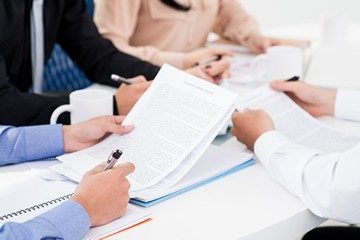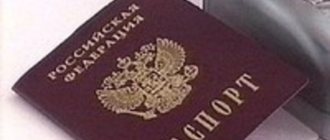open competition in electronic form 44 FZ
The customer can hold a tender under 44-FZ for the supply of those goods that are not included in the auction list. This list was not established by the Government by chance - the competition is considered a more corrupt procedure than an auction. In addition, high-tech, innovative goods, as well as products related to state secrets, are not purchased through the competition. Competition under 223-FZ does not have such restrictions.
Open competitions under 44-FZ are held from January 1, 2021 only in electronic form.
Open competition under 223-FZ: legislative regulation
An open tender in electronic form under 223-FZ is a procurement that is carried out in electronic or non-electronic format. A notice about it is published in the Unified Information System, and it itself takes place at the site chosen by the customer.
To accept and consider applications for participation in the competition, in accordance with 223-FZ, an electronic trading platform is used. The list of such sites is not limited, as, for example, in 44-FZ. Today there are more than 150 platforms where trading under 223-FZ is held.
A special feature of the open competition is that any participant who manages to meet the deadline can submit an application to participate in it. This type of procurement is carried out if price is not the determining or sole criterion for choosing a contractor.
In competitions, applications are selected based on the criteria approved in the procurement documentation. There can be at least two such for the competition to be considered valid.
When holding a competition under 223-FZ, a competition commission must be created. The composition of the commission may change or remain constant.
According to the new rules, which were adopted at the end of 2021, significant changes are being made to the procurement legislation of legal entities within the framework of 223-FZ. Some of these amendments began to take effect in July 2021, while others will come into force in January 2021.
The results of the changes were:
- Advantages are now given to electronic trading.
- Competitions for SMMEs are held only in electronic form.
- The concept of electronic competition was introduced in 223-FZ.
- The rules for describing the procurement item are changing: it is now impossible to indicate a specific trademark (unless consumables and spare parts are purchased).
- In the subject of purchase, the customer must indicate the technical and operational characteristics of the product , as well as its consumer properties.
- Securing the participant's application in the competition will be determined by the NMCC . So, if the price is indicated in the amount of less than 5 million rubles, then security for the application is not required. If the price is up to 20 million rubles, then security under the contract is required in the amount of 0.5-1% of the NMCC, more than 20 million rubles. – 0.5-5% of NMCC. For beneficiaries and in the case of concluding large contracts, the rate is set at 0.5-2%.
Transferring procurement to electronic format is the most important goal of the ongoing reform of the existing procurement system. It is expected that the competition, regardless of its type (open, closed, limited participation or two-stage), will move completely into an electronic format.
Holding an open competition in electronic form will become possible in July 2021 and mandatory from January 2021.
The competition is a form of competitive procurement and is regulated by Art. 3.2 223-FZ. At the same time, the legislation regulates only general procurement provisions, while this aspect is determined in more detail by the customer.
When conducting a tender electronically, it is necessary to focus not only on the provisions of 223-FZ, but also on the Procurement Regulations approved by the customer. In particular, it is the Procurement Regulations that stipulate restrictions on the selection of open competition . For example, from the point of view of the purchase of certain products, the amount of tenders or the specifics of the contract.
Previously, 223-FZ transferred responsibilities for developing rules for conducting procurement procedures to the customer. This principle continues today. In this case, the Procurement Regulations are subject to adjustment.
Under the new rules, federal, regional and municipal authorities will be able to approve their own standard procurement regulations. The responsibilities of budgetary and autonomous institutions will include the application of these rules.
Such standard provisions specify information on the procedure for preparing a purchase, information on procurement methods and the conditions for their application, as well as the deadlines for concluding a standard contract. It also sets out the specifics of participation in procurement by SMEs.
open competition in electronic form 223 Federal Law
As for 223-FZ, customers, in principle, can also organize paper tenders if their procurement regulations allow this.
The fundamental difference between a competition and an auction and a request for quotations is that the bid price is not the only criterion for selecting the winner. The winner of the competition is the participant who offers the best terms for concluding a contract, taking into account the criteria, each of which has its own weight in points. The offer price is set immediately - in this way the competition is similar to a request for quotations.
How to conduct an open competition: instructions for the customer
Open competition is strictly regulated. When carrying out the procedure, adhere to the rules established by Art. 3.4 223-FZ. Here are detailed step-by-step instructions on how to conduct a competition under 223-FZ:
Step 1. Compile documentation. In it we define the object of purchase and specify in detail the criteria for participants. The criteria are established according to the customer’s procurement regulations. Unreasonable deviations from local standards are prohibited. Here's what else they include in the documentation:
- Calculation of the initial (maximum) contract price.
- Instructions for participants: how to submit an application, how to describe the product, when to submit an offer.
- The procedure for delivery, acceptance and mutual settlements.
- Basic requirements for potential suppliers.
- Draft agreement.
If the order requires application security, then we carry out a calculation in the documentation - we multiply the initial price by 5% (this is the maximum value). This item will be needed only if the NMCC is above 5 million rubles. (Part 27, Article 3.2 223-FZ).
As part of the procurement documents, we do not forget about the notification - the basis of any competitive procurement. The notice for an open competition describes information about the customer, the method and subject of bidding, the NMCC, and the deadline for submitting applications from participants.
Step 2. We publish the notice, documentation and draft contract. The responsible executor must adhere to the time frames established by law. Calculate the timing of the competition according to 223-FZ correctly - participants are given the following to submit applications:
- 15 days - from the date of publication of the notice in the Unified Information System (Part 17, Article 3.2 223-FZ);
- 7 days (minimum) - when holding a tender among SMEs and a price of up to 30 million rubles. (Part 3, Article 3.4 223-FZ).
If the customer organizes closed competitive procedures, then information about them is not published in the Unified Information System.
Cancellation of the order is also possible. If necessary, cancel the auction at any time before the bid deadline. If you make changes, then extend the deadline for submitting the proposal - leave at least half of the total period until the closing date for accepting applications. All adjustments are reflected in the EIS. The operator of the electronic platform updates the information within an hour and notifies all participants about the changes.
The customer is obliged to explain the provisions of the documentation at the request of the participant. Requests must be submitted no later than 3 days before the deadline for accepting proposals. Clarifications must be provided within 3 working days.

Step 3. We accept and consider proposals.
If the procedure is carried out in paper form, then all applications are sent in sealed envelopes to the address specified in the documentation. Different rules apply for electronic orders. Here are step-by-step instructions for the competition in electronic form under 223-FZ:
- We receive offers via an electronic platform. They are forwarded by the operator.
- We are considering the first parts of applications.
- We admit potential suppliers to further trading procedures. To obtain access, the contractor must meet the requirements for goods, works and services.
- We are considering the second parts of applications and accompanying documents. If necessary, we carry out rebidding.
- We evaluate the final proposals and determine the winner.
All actions of the customer’s purchasing committee are recorded. The recording documents reflect information about applications, their compliance with the requirements and criteria from the documentation, certified decisions of all commission members for each proposal and each participant. The protocols are published in the Unified Information System within 3 days from the date of signing (Part 12 of Article 4 223-FZ).
procedure for conducting an electronic competition under 44 Federal Laws
The competition can be one-stage or two-stage. A two-stage competition under 44-FZ involves pre-qualification. At the second stage, the winner is selected only from those who have passed this selection. Two-stage competitions are held, in particular, for scientific research, design studies, experiments, for the supply of innovative and high-tech products, and the creation of objects of literature and art. The competition under 223-FZ can be either single- or multi-stage. Law 223-FZ does not limit the customer in the number of stages; everything is determined by its procurement regulations.
competition documentation of the competition in electronic form
Please review the competition documentation carefully to ensure that the competition is right for you. First of all, pay attention to when the application deadline is.
Be sure to pay attention to the term of the contract, the address(es) for delivery of goods, provision of services, and performance of work. The most delicious competition will become unprofitable if the goods have to be transported, for example, to the Far East, and even monthly, for, say, six months.
The above applies to another case. For example, the customer indicates that the goods are supplied in small quantities upon request. Even if the customer is located in a neighboring region, transporting there, for example, welding electrodes one pack at a time, will be very unprofitable for several months.
Finally, the requirements for packaging and packing of goods must also be taken into account. If, for example, a customer requires 1 kg of halite to be packaged at a time when halite of the same brand is packaged in Euro bags with a capacity of 1 ton, of course, it is worth thinking about the feasibility of participation. After all, purchasing a thirty-ton batch of halite in 20 kg bags will cost much more than the same batch in 1 ton Euro bags. But the customer will not take halite in euro bags from you, and if you indicate in the offer: packaging of 1000 kg, he will simply reject your application.
The customer can set a variety of criteria for selecting the winner in the tender documentation. Let's take a closer look at them.
If the competition is held under 44-FZ, then there must be at least two criteria, and one of them must be cost-based. Non-cost criteria include criteria relating to the quality and characteristics of the purchased objects, as well as the reputation and qualifications of the participant. Additional criteria are applied to the purchase of high-tech goods, which we will not dwell on.
Non-cost criteria in an open electronic competition
Non-cost criteria include:
-quality of goods supplied;
-technical characteristics of the supplied goods;
-ecological safety of purchased goods;
- qualifications of the head of the participant’s organization and his employees (for example, approvals for electrical safety, industrial mountaineering, etc.);
— the participant has experience in performing similar work (executed contracts);
— provision of material and technical resources (availability of warehouses, production facilities, etc.);
— sufficient amount of labor resources;
— business reputation of the participant (availability of gratitude, certificates from customers)
For each of the criteria chosen by the customer, the participant is also given points. The more accurately a potential supplier meets the customer's requirements, the more points he will receive.
If you find a “repeated” mark in the information system, you can draw some conclusions. This means that there were no participants the first time, and you can become the only one if no one else applies for it again. If the auction competition is held again after the FAS order, it is possible that this repetition will not be the last. After all, if the customer is dishonest, he can, while correcting some errors in the documentation, deliberately make others in order to prolong time for some of his reasons.
Analysis of the feasibility of participation in an open competition in electronic form
It is advisable to conduct a reduction analysis. Having selected at least 3 competitions organized by the same customer, under 44-FZ or 223-FZ, respectively, and for the same subject of procurement, recently, calculate the arithmetic average of the reduction. If it is very large, as is the number of participants in completed auctions, there may be no point in participating. It must be said that in general the number of participants in auctions held under 223-FZ is less than the number of participants in auctions under 44-FZ. Consequently, the average reductions at auctions under 223-FZ are also smaller. In addition, as a rule, reductions in tenders under both 44-FZ and 223-FZ are lower than in requests for quotations and, especially, auctions. After all, criteria-based selection limits the number of participants.
Do not forget that tenders under 44-FZ can be held with restrictions on the supply of goods from foreign countries depending on the list of goods required by the customer, and they are also subject to the rules for granting priority to Russian goods, works and services established by PP 925. Accordingly, It is necessary to indicate the country of origin of all supplied goods, works, and services. And although Chinese goods are cheaper than Russian ones, keep in mind that it will not be possible to sell them to the customer of such a competition if they win. Replacement of foreign goods upon delivery is permitted by law, but not vice versa. As for auctions under 223-FZ, they are subject to priorities for the supply of goods, services and works. Having received a 15% head start, the participant offering Russian goods, works or services will most likely win the competition. It is impossible to indicate in the proposal that the origin of the goods is Russian; it will come out sideways upon delivery, as already indicated above. If imported goods are less than 15% cheaper than Russian ones, it is advisable to offer Russian products. If they are more than 15% cheaper than Russian goods, it may be worth refusing to participate, because the margin will decrease, or still participate in the hope that you will be the only participant and PP 925 will not be applied.
Carefully analyze the criteria by which the customer determines the winner. The significance of the offer price cannot be less than 50%.
Continuation of the article
You might be interested in:
- Open electronic competition for construction work
- ELECTRONIC COMPETITION UNDER 44 Federal Laws and 223 Federal Laws
- Protocol for summing up the results of an open competition in electronic form
- LITERARY COMPETITION “BEST WORK ABOUT TRADE”
- APPLICATION FOR COMPETITION UNDER 44-FZ
- COMPETITION FOR 44-FZ. CONDUCT AND PARTICIPATION IN THE COMPETITION
- TRAPS FOR SUPPLIERS IN FORM 2
- Addresses of the official website and email of the FAS Russia
- COMPARABILITY CRITERIA IN PUBLIC PROCUREMENT
- CUSTOMERS ARE REQUIRED TO PUBLISH IN THE EIS
Procedure for holding the competition
The procedure for conducting an open competition in electronic form includes the following stages:

- Development of a procurement plan . To conduct an open tender, it is necessary to prepare a procurement plan and include this procedure there. This plan can be adjusted if the need for goods changes by 5-10%.
- Preparation of notice and documentation.
- Placing notices and documentation in the Unified Information System . 223-FZ establishes at least 15 days for holding an open competition from the moment the information is posted in the Unified Information System (in accordance with Part 17 of Article 3.2). If the procedure is carried out among small businesses, then the acceptance of applications should be reduced to 7 days (if the initial price does not exceed 30 million rubles according to Part 3 of Article 3.4).
- Review and evaluation of received applications . The peculiarity of this stage is that the alternative to opening envelopes is to provide access to applications. When reviewing and evaluating received applications, the participant should take into account two factors: the extent to which the received application meets the requirements and the participant himself. Based on this, applications are either accepted or rejected. Also at this stage, the customer has the opportunity to request additional information from the participants.
- Review by the customer of the first parts of applications , which will contain information about the product.
- The second parts of applications are assessed to ensure that participants meet all requirements and have all the necessary documents.
- Announcement of rebidding, if provided for by the Procurement Regulations . This procedure assumes the possibility of reducing the proposed cost of contract execution by participants. This allows us to reduce costs for the customer.
- The received applications are evaluated according to the criteria contained in the regulations . The customer determines the criteria for evaluating applications for the competition himself, but usually they include the total cost of the contract, the list of products supplied, the technical and material resources of the manufacturer, as well as payment terms, delivery date, availability of the necessary qualifications to perform work or provide services, etc.
- Based on the results of the purchase, the customer must prepare a final protocol and post it within 3 days from the date of signing (in accordance with Part 12 of Article 4). This protocol must contain data on the date of signing, the number of applications received, information about participants, the results of consideration and evaluation of the application for each criterion. An agreement may be concluded with either one or several participants, if this is provided for in the agreement.
- Signing the contract . The agreement must be signed no earlier than 10 and no later than 20 days after the publication of the final protocol. If FAS approval is required before this, the contract is signed within 5 days after its receipt.
- After signing the agreement, information about this must be posted in the Unified Information System within 3 days (according to Part 2 of Article 4.1). If changes are made to it, information about this must be sent to the Unified Information System within 10 days after both parties sign the additional agreement.







